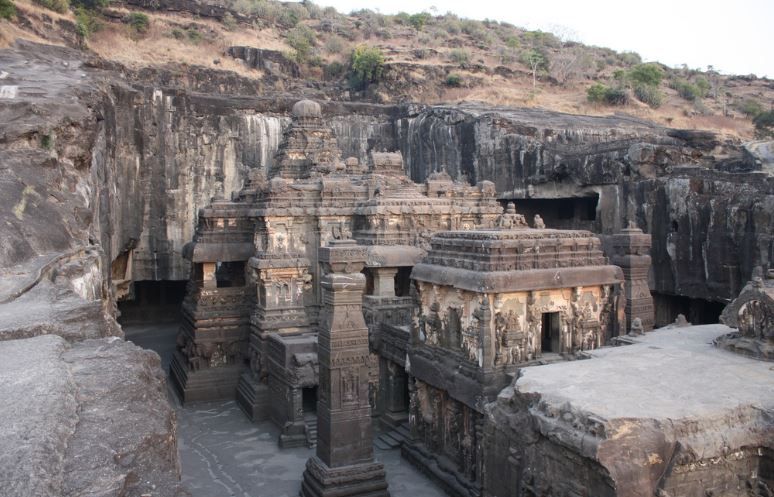Historic Aurangabad Tour
Address :- Pune viman Nagar, Aurangabad, Maharashtra, India
Aurangabad Tour - January 11 to 16 2020
Ellora Leni and Ghrishneshwar Jyotirlinga Temple, Verul
Ellora Caves :
Ellora is an archaeological site, 30 km (19 mi) away from Aurangabad city built by the Rashtrakuta rulers. Well known for its monumental caves, Ellora is a World Heritage Site. Ellora represents the epitome of Indian rock-cut architecture. The 34 “caves”, actually structures excavated out of the vertical face of the Charanandri hills, being Buddhist, Hindu and Jain rock-cut temples and monasteries, were built between the 5th and 10th centuries.
Ghrishneshwar Jyotirlinga Temple, Verul :
A kilometer long walk away from Ellora caves, the 18th century temple of one of the five Jyothirlingas of Lord Shiva in Maharashtra and 12 of that in India, holds great gathers much significance from its visitors.
Ajanta Caves:
The Ajanta Caves in Maharashtra, India are 31 rock-cut cave monuments which date from the 2nd century BC. The caves include paintings and sculptures considered to be masterpieces of both Buddhist religious art (which depict the Jataka tales) as well as frescos which are reminiscent of the Sigiriya paintings in Sri Lanka.
Daulatabad Fort
Daulatabad, meaning “City of Prosperity”, is a 14th-century fort city in Maharashtra, about 16 kilometers northwest of Aurangabad. The place was once as known as Deogiri.
Bibi Ka Makbara
Situated about 3 km from the city is Bibi Ka Maqbara, the burial place of Aurangzeb’s wife, Rabia-ud-Durrani. It is an imitation of the Taj at Agra, and, due to its similar design, it is popularly known as the Mini Taj of the Deccan.
Paithani Silk Saris
Paithani is a popular variety of sari, named after the Paithan town in Aurangabad district where they are woven by hand. Paithani saris are made from very fine silk and are considered as one of the richest saris in India.
Paithani is characterized by borders of an oblique square design, and a pallu with a Peacock design. Plain as well as spotted designs are available. Among other varieties, single colored and kaleidoscope-colored designs are also popular. The kaleidoscopic effect is achieved by using one color for weaving lengthwise and another for weaving width wise.
Specialitity of Paithani Silk Saris
The art of weaving Paithani flourished in 200B.C., during Satvahana era. since then Paithani is coveted in India as a precious heirloom passing on from generation to generation. Shear dedication and the faith of the weavers has kept alive Paithani silk work for more than 2000years. Real Paithani is hand woven pure silk and gold/silver. Intricate designs on pallu and border is a specialty of Paithani Sarees. Motifs on pallu are generally peacock, lotus, mango and other designs taken form Ajanta Caves. The Paithani is also considered holy in Indian tradition because of use silk, which has a special importance in Indian marriages.
“Be it a garment or be it a legacy of art, Paithani is the glory of Maharashtra”
Himroo Shawl
Himroo, is a fabric made of silk and cotton that is locally grown in Aurangabad. The word Himroo is derived from the persian word ‘hum-ruh’ which means ‘similar’. Himroo is a replica of Kum-Khwab, which was woven with golden and silver threads of ancient times and was for the royal families. Himroo uses the Persian design, and it is very characteristic and distinctive in appearance. Himroo from Aurangbad has a high demand for its unique and fascinating style and design. Himroo is woven near the Gaffar Gate in Himroo fabric.
The Story of Himroo Shawl
Himroo was brought to Aurangabad in the reign of Mohammad Tughlaq, when he had shifted his capital from Delhi to Daulatabad, Aurangabad. An entire generation of craftsmen followed Mohammad Tughlaq during his adventurous journey. When Tughlaq decided to shift the capital back to Delhi, most craftsmen stayed back. Many of these weavers and craftsmen continued to supply textile products such as stoles, shawls and other linens to the royal households. The handicraft industry in Aurangabad attracted hundreds of craftsman and artisans. Members of the royal family and an elite few used the famous Aurangabad himroo. Some Historian believe that Himroo weaving has roots in Persia, while many local historians seem to have a different view and suggest that Himroo has very little or no Persian influence. Kings and Queen during the medieval era had a huge stock of Himroo collections stashed away in their wardrobes. Renowned traveler Marco Polo was gifted a Himroo Shawl during his visit in the Deccan region. Marco Polo writes in his memoirs “It is as fine as a spider’s web and Kings and Queens of any country will take pride in wearing it”.
Policies
- The primary guest must be at least 18 years of age to be able to check into the hotel.
- It is mandatory for guests to present valid photo identification at the time of check-in. According to government regulations, a valid Photo ID has to be carried by every person above the age of 18 staying at the hotel. The identification proofs accepted are Aadhar Card, Driving License, Voter ID Card, and Passport. Without Original copy of valid ID the guest will not be allowed to check-in.
- PAN card is not accepted as a valid ID card.
- Extra mattress will be provided for triple occupancy bookings.
- Pets are not allowed in the hotel premises.

